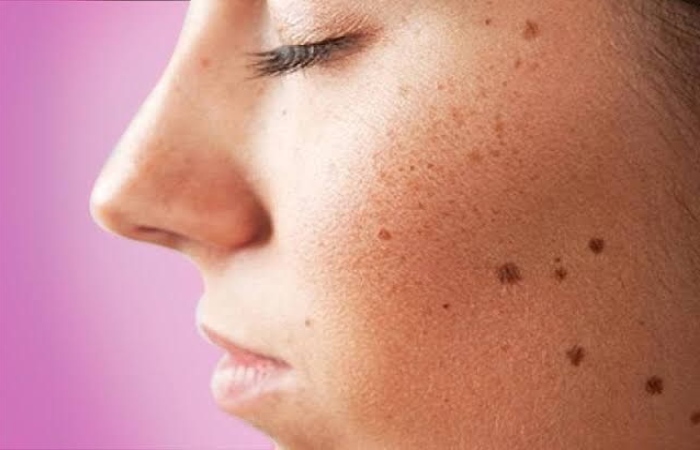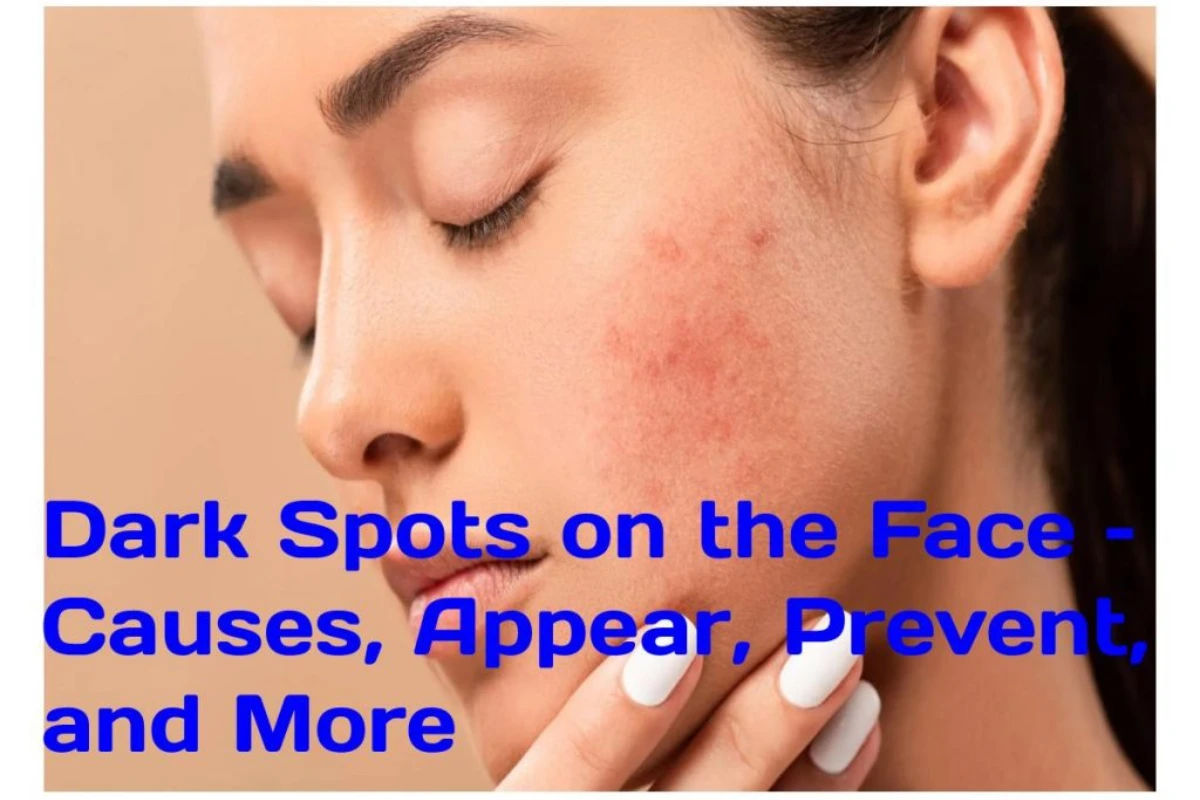Dark spots are located mainly on the face and hands due to hyperpigmentation of the skin.
Dark spots are prevalent, especially in women, regardless of skin color. These spots are small, darkened areas compared to the rest of the skin. If they also take the name of age spots or lentigo, they are not directly related to age but rather to the oxidation of the skin.
Table of Contents
What are the Causes of Dark Spots?
Skin hyperpigmentation is a natural process due to a buildup of melanin, the pigments responsible for skin color, hair, and eyes. Depending on the melanin concentration, the color of the skin is more or less dark.
Melanin also has a part in protecting the skin against the sun. However, repeated overexposure to the sun will create an excessive production of melanin, responsible for more or less dark spots on the body. Quite logically, they can find the areas most exposed to the sun, such as the face, hands, forearms, and shoulders.

Other Factors are Involved in the Occurrence of these Spots.
Skin Aging: we talk about age spots or senile lentigo. The free radicals produced by the body lead to a process of cell oxidation. The development of free radicals accentuates by the sun, pollution, tobacco consumption, anxiety, an unbalanced diet, etc. To avoid the excessive growth of free radicals, it is advisable to avoid the consumption of alcohol and tobacco.
Residual Scars: skin lesions resulting from burns, insect bites, or acne, for example, weaken the epidermis against UV rays and increase the risk of developing brown spots.
Hormones: hormonal variations in women during pregnancy, menopause, or taking contraception, for example, can cause brown spots. Pregnant women met with the phenomenon of the pregnancy mask. Also called chloasma or melasma, these are tiny brown spots that appear on the face of pregnant women due to increased melanin synthesis.
The use of too aggressive treatments: repeated exfoliation can cause lesions or fragility of the epidermis, again favoring the appearance of brown spots.
Where can Dark Spots Appear?
Age spots tend to appear on the most fragile areas of skin. Thus their appearance is more common on the back of the hands and the face, and it is nevertheless possible to see them also appear on the legs.
What to do to Prevent Dark Spots on the Face?
As we have seen, dark spots mainly develop due to sun exposure. Using sunscreen daily is therefore necessary, including on days of bad weather. Choose a day cream with a sun protection factor against UVA and UVB.
To be effective, sunscreen should be applied once every two hours during exposure and unsystematically after swimming or sporting activity. At the same time, it recommends avoiding sun exposure between noon and 4 p.m.
How to Remove Dark Spots?
Prevention is key to controlling the development of dark spots. If you already have dark places that won’t disappear, the first step is to see a dermatologist. The objective is to control the nature of these spots to ensure they are benign. You can then agree on an appropriate treatment with the healthcare professional.
However, be aware those stains are difficult and slow to remove once installed.
Dermatological treatments
Here are the different treatments available to the dermatologist:
- creams prepared in pharmacies on medical prescription;
- cryotherapy (risk of white scars);
- laser therapy;
- chemical peels.
The latter two techniques stimulate the growth of new skin cells to reveal fresh, unblemished skin. Laser therapy is more precise than chemical peeling. After these treatments, it will be advisable to reinforce sun protection further to avoid recurrence.

